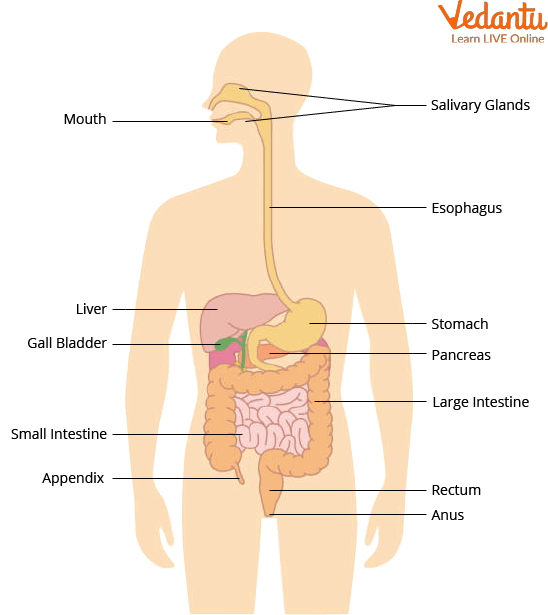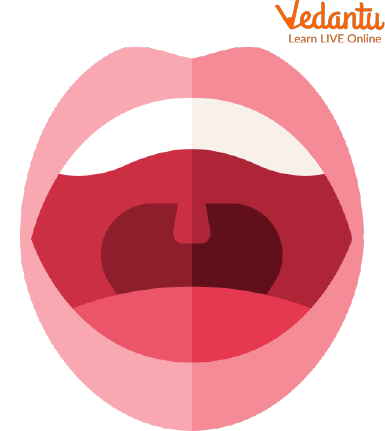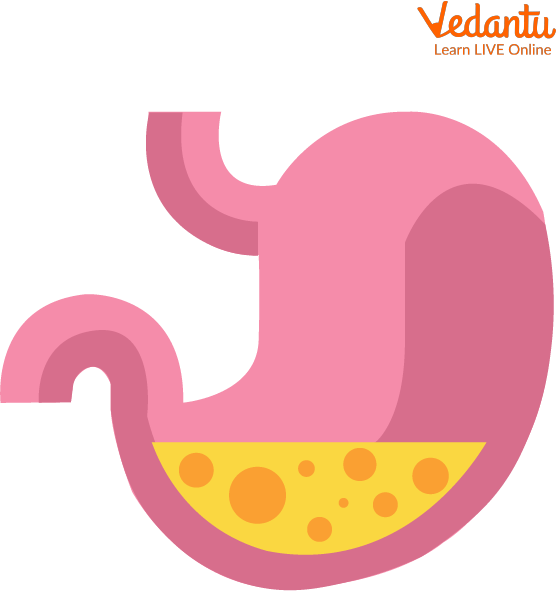




Introduction to Digestive System
When you're feeling hungry and your tummy is rumbling. What do you do? Well, if you're anything like most people, you head straight for the refrigerator. But what's inside that fridge? A whole lot of food! Food that your body needs to tell you what to do! The digestive system breaks down food into nutrients such as carbohydrates, fats and proteins. If you're looking for a fun and interesting way to teach your kids about the human digestive system, then this is the perfect article for you! Break down the digestive system process and show them an easy-to-understand diagram of the digestive system.
What is the Digestive System?
The system present in the body and consists of the gastrointestinal tract and accessory organs of digestion is known as the digestive system. The digestive system breaks down the food we eat into nutrients, vitamins, and minerals. It takes complex substances such as carbohydrates, proteins, etc in our food into simpler substances like sugar and amino acids that the body can easily absorb. They can then be absorbed into the bloodstream so the body can use them for energy, growth and repair. The process of biochemical and mechanical breakdown of food into simpler components for easier absorption performed by the digestive system is known as digestion.
Our body needs energy to perform day-to-day activities. We all eat food throughout the day. Food is the most important fuel to run our body. We get energy from the food, So that is why our parents and near n dear ones always suggest we eat well so as to stay healthy.

Fruits and Vegetables
But what happens to food after we swallow it? Have you ever thought about how food is converted into energy? How do we get the required nutrients from food? And how does this whole process take place? To understand this we need to study the digestive system of our body. As the digestive system helps to digest the food we eat.

Food
What is a Digestive System?
The digestive system consists of a group of organs that break down the food in order to absorb the nutrients from it. These nutrients in food are used by our body as fuel for keeping all our body systems working.
The digestive system consists of the following parts:
Mouth
Oesophagus
Stomach
Small intestine
Large intestine
Anus
Digestive System Diagram for Kids

Human Digestive System
Parts of the Digestive System
1. Mouth: The digestion process starts at the beginning when food is chewed by the mouth.

Mouth
2. Oesophagus: It is a tube behind the windpipe which is inside the throat. After food is chewed it goes to the oesophagus.

Oesophagus
3. Stomach: The stomach is the place where the food gets mixed with various enzymes and acids that are secreted by the stomach.The Hydrochloric acid that helps in activation of enzymes which are helpful in digestion.

Stomach
4. Small Intestine: It is a long tube where most of the minerals and vitamins are absorbed from the digested food into the blood.

Small Intestine
5. Large Intestine: It is the place where the water from the waste material is absorbed. The various sections of the large intestine are: the cecum, ascending colon, transverse colon, descending colon, and sigmoid colon.

Large Intestine
6. Rectum: It is a reservoir that holds stool or faecal matter till the time it is passed out from the body.

Rectum
How does the Digestive System Work?
In Digestion, the food moves through the Gastrointestinal Tract. The process of digestion begins in the mouth with the chewing of food and ends in the small intestine.
As the food passes from the GI tract it gets mixed with the various digestive enzymes and juices in the stomach which helps in breaking the larger molecules of food into smaller molecules.
The body then absorbs the smaller molecules of food with the help of the walls of the small intestine which in turn delivers it to the rest of the body parts.
Then the remaining waste products of the process of digestion pass to the large intestine and then out of the body in the form of solid matter called stool/ faecal matter.
Functions of Digestive System
The functions of the digestive system are discussed below:
Ingestion of food: It is a process in which food enters through the mouth into the alimentary canal.
Secretion: In this, there is the release of various enzymes, acids, hormones, and other substances which help the body in digesting the food which we eat.
Digestion: The nutrients and minerals which are not digested from the food are broken down by the digestive system into smaller molecules so that energy is produced.
Absorption: The lymph system then absorbs the various vitamins and fatty acids for use by the small intestine.
Summary
The digestive system is responsible for breaking down food and absorbing nutrients from the stomach and small intestine. It also helps to keep toxins out of the body and excretes waste products through the rectum and anus. In this article, we covered the digestive system diagram for kids and how it works. We have also discussed what is the digestive system and its functions. The food we eat gets digested in our stomach now we are familiar with how it does. The enzymes and juices soften the food and then it acts as fuel to our body. Complex substances like carbohydrates, proteins, etc present in our food are converted into simpler substances like sugar and amino acids so that the body can easily absorb and digest them. In case of any other doubts feel free to contact us in the comments.
FAQs on Digestive System for Kids
1. What is the digestive system in simple words for kids?
The digestive system is like a food-processing factory inside your body. It's a group of organs that work together to break down the food you eat, like apples and chapati, into tiny pieces called nutrients. Your body then uses these nutrients as fuel to give you energy to run, play, and grow.
2. What are the main parts of our digestive system?
The digestive system is a long tube with several important stops along the way. The main parts are:
- Mouth: Where digestion begins with chewing.
- Oesophagus: A tube that carries food from your mouth to your stomach.
- Stomach: A stretchy bag that mixes food with special juices.
- Small Intestine: A long, coiled tube where most of the good stuff (nutrients) from food is absorbed.
- Large Intestine: Where water is absorbed from the leftover food.
- Anus: The exit point for waste from the body.
3. What is the journey of food from our mouth to our stomach?
The journey starts in the mouth, where your teeth chew the food into small, mushy pieces and mix it with saliva. When you swallow, the food travels down a tube called the oesophagus. The oesophagus muscles gently push the food down, like squeezing a tube of toothpaste, until it lands in the stomach for the next stage of digestion.
4. Why is it so important to chew our food properly?
Chewing your food well is the very first step of good digestion. When you chew, you break down large food pieces into smaller ones, which makes it much easier for your stomach to do its job. Your saliva also mixes with the food, which contains special enzymes that start breaking down the food even before you swallow. Chewing properly helps your body get more nutrients from your food.
5. How does our body get energy from the food we eat?
After the stomach turns food into a soupy mix, it moves to the small intestine. Here, the important nutrients, like carbohydrates and proteins, are broken down into super-tiny molecules. The walls of the small intestine absorb these molecules and send them into your blood. The blood then carries this energy-packed fuel to all parts of your body, helping your muscles move and your brain think.
6. What is the difference between the small intestine and the large intestine?
The main difference is their job. The small intestine is very long (about 22 feet!) and its main job is to absorb most of the useful nutrients from your food. The large intestine is shorter (about 5 feet) and its main job is to absorb water from the leftover waste material, turning it into stool before it leaves the body.
7. What happens to the parts of food that our body cannot use?
Not everything we eat can be used by our body. The leftover waste material, which is mostly fibre, moves from the small intestine to the large intestine. Here, water is absorbed, and the waste becomes more solid. This solid waste, called stool, is stored in the rectum until you are ready to go to the toilet and push it out through the anus.
8. What are some fun facts about the digestive system?
Here are some amazing facts about your body's food factory:
- Even if you were hanging upside down, food would still get to your stomach because of the wave-like muscles in your oesophagus.
- Your stomach can stretch to hold a lot of food, almost like a balloon.
- The small intestine is not small at all! If you stretched it out, it would be as long as several adults lying end-to-end.
- Your body produces about 1.5 litres of saliva every single day!









